Amalie Robert Estate: Lip Sanitizer & 2020 Spring Cellar Report - Vegan Edition
Hello and Welcome,

Before we get to the Spring Cellar Report - Vegan Edition, we have a Special FLOG Communication.
As you are most certainly aware, the Coronavirus is rapidly spreading across the planet. Virtually all US and World health related agencies have issued safety precautions, travel warnings and, in some cases, quarantines to help contain the spread of the virus. These are important recommendations that should be followed. You can follow Johns Hopkins University tracking of the outbreak here.
The Pacific Northwest, and the Seattle area in particular, was one of the first areas in the United States to be exposed to the Coronavirus. As efforts to contain the spread of this virus have increased, many public events and gatherings have been cancelled. The downstream effects of these cancellations include a reduction in travel and tourism related economic activity. Specifically in the greater Seattle area, over 40 restaurants have closed, some permanently, in response to a lack of patrons.
Retailers are feeling the effects as well. If your local merchant is running “out of stock” on hand sanitizer or bath tissue, may we suggest looking to online sellers such as eBay. Not that we recommend that you should support these sellers, but it is interesting to see private label brands being re-sold this way. And maybe that is why your local merchant is running “out of stock”.

If you are looking for even more protections, may we suggest augmenting your facial mask protocol with a lip sanitizer. Lips are important and form a quite necessary aperture for the enjoyment of wine. To exclude lips from the first line of defense seems to leave open a pathway to potential infection. To help provide a first line of protection for your lips we suggest Pinot in Pink Rosé as a home remedy lip sanitizer. Note: The effectiveness of Pinot in Pink Rosé as a home remedy lip sanitizer has not been proven, studied or even contemplated.
We would also like to remind you that everyone gets a free cork included in each bottle. Our corks are firebranded (no ink) and are made from natural tree bark, as are most premium closures in use for fine wines today. They are also considered to be an approved vegan closure. We compress our corks to about 50% of their relaxed diameter and then insert them into our bottles. The cork will naturally expand to fill the neck of the bottle and seal the contents inside from virtually all outside contamination. While natural corks are not a substitute item for bath tissue, they may perform a necessary and vital function during an “out of stock” condition.

The winery at Amalie Robert Estate is closed to visitation for the duration of March. Even though we believe we are virus free, the challenge is for you to get here and return home safely via plane, train or automobile.
Please join us for the 2020 Spring Cellar Report – Vegan Edition.
~~~~~~~~~~~~~~~~~~~~~~~~~~~~~~~~~~~~~~~~~~~~~~~~~
2020 Spring Cellar Report – Vegan Edition
Hello and Welcome,
This is the 2020 Spring Cellar Report – Vegan Edition from @AmalieRobert. A FLOG Communication.
After a brief respite and a well-deserved nap, we are back in the cellar. The primary fermentations are complete, and the Malo-lactic conversions are in suspended animation. Too damn cold for the Malo-lactic bacteria to convert malic acid to lactic acid. But not to worry, when the cellar warms up the bacteria will complete their conversion and blow the barrel bungs. Then it is time to melt some sand and harvest some tree bark, it’s bottling season.
Meanwhile, we would like to guide you through the mystery of converting a vegan agricultural crop (wine berries) into an otherworldly adult recreational beverage (wine). Please be aware that what you are about to read and see may upset your cognitive processes and dislodge some preconceived notions about how we get from wine berries to wine. And the images will be graphic, especially the graphs. Like this one:

The “Jet” also known as the “Jet Stream” or more colloquially as the “Trade Winds” have a Yuge impact on the final days of the be-dangled wine berry, and consequently the resulting wine. In the above graphic, we see a trove of cold air coming to arrest the sugar development of any yet to be harvested wine berries, thus providing for lower alcohol potential and retention of scintillating acidity. Aroma, flavor and texture, however, continue to develop unabated, albeit somewhat more slowly. The harvest lesson to be learned is that if the Jet Stream is below you, prepare for a little arctic influence in your ripening curve.

This concept is known as hangtime and has been missing from the Willamette Valley for the past few vintages. As you will notice from about the 6th of September and throughout the end of the month, below average daytime temperatures keep sugars in check. Then toward the end of the month, the evening temperatures drop, helping to preserve our natural acidity.
Or, as Ernie would tell you, this is when the vintage took a turn for the best. We experienced slow and steady aroma, flavor and texture development without having to worry about excessive sugar accumulation and the resulting high alcohol potential.

What a welcome relief from the days of the Jet Stream to our north filling the Willamette Valley with all the misbegotten heat from the Central Valley. Note: Heat expands to fill the space available.

We think of a vineyard construct in terms of acreage cut into blocks comprised of rows of vines constrained by a trellis. All very well and good and serves our purpose of growing wine. But for today’s FLOG let’s just think of a vineyard as a big East Coast city. One that has been around awhile, maybe a century or so, harkening us back to the 20’s. Man what a time to be alive, Speakeasies and Alphonse Capone were alive and well. The unintended consequences of Prohibition were to be seen all around, including your prescription for medicinal wine.
Like most big cities, our vinous city has neighborhoods and boroughs. Boroughs because we also have gophers that burrow under the walkways and roads, always trying to undermine our good faith efforts by eating the roots off of our vines. Occasionally, we have the opportunity to confront these rival gangs and dispatch them forthwith. And yes, Ernie has a “grease gun” but not the kind you may be thinking about.
Welcome to the neighborhood. In our city there are several neighborhoods mostly defined by where they are located. Pockets of vines that face east or south, or southwest. We also have the east side, as any representative city would have. Some of these neighborhoods are very diverse, home to Pinot Noir and Pinot Meunier, or Pinot Noir and Chardonnay. Others are more isolated, such as the Gewurztraminer grafted onto the old rootstock block. And then there is the Syrah and Viognier quarter. They are transplants from Northern Rhônia. They keep to themselves and are rarely seen in other parts of our vinous city.
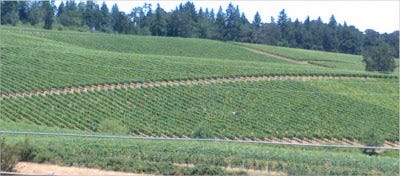
A year in the life. As these neighborhoods have matured, they have started to gift the city a bountiful harvest. Not of tax dollars or intellectual ingenuity, but of wine berries. Each neighborhood provides a unique contribution depending on their geographic location and indigenous population. Let’s have a look at one family in particular.
Introducing Gluc and Fruct Ose. Gluc and Fruct are closely related by genetics. Each wine berry that is harvested has a similar Ose family. The acid family is well represented within the wine berry collective by Tartaric and Malic. (Note, these families were gender neutral way before it was nouveau.) And then there are the Saccharomyces cerevisiae (aka Yeast). Growing up alongside the wine berry, but never welcomed inside the outer membrane. These are the main actors in our neighborhood. Then there is Cousin Como T. Ose, more on that one later on.
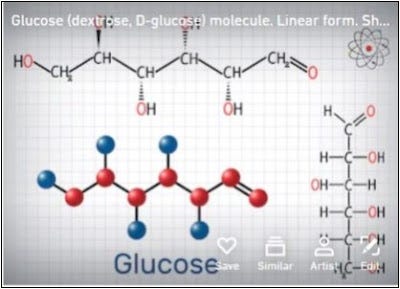
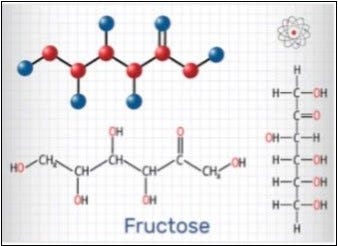
In a genetic experiment that went horribly wrong, High Fruct Ose corn syrup was invented. Much like GMO crops and their associated pollen, once released into our environment they are hard to control. Legalization of previously restricted compounds, processes and procedures can have unintended consequences. Fortunately, these products do have ingredient labels.
And some products do not have warning labels but should. Consider the vegan wine dilemma. Their thing is they would like to not consume animals, parts thereof or anything with animal residue. Fair enough, but why does this have anything to do with wine berries, Gluc and Fruct, or Saccharomyces cerevisiae? In our city it doesn’t, but every city has its underworld. More on that to follow, ya follah?
Right, so on harvest day Ernie rolls up with the tractors and harvest bins and we collect the bounty from each neighborhood. We try and get there before the other unregulated factions do, but those birds and deer are fairly cunning in their approach. Nonetheless, there is plenty for everyone.

All of the wine berries are sorted in case they have been turned against us by mildew or Botrytis. Those compromised wine berries are sent to compost collectives where they will be repurposed to nourish the land and positively contribute to a future vintage. Everyone must do their part, to do the best at what is expected from them.
As the sorting and processing function occurs, the wine berry families are deposited in sanitized 3,000 pound containers (fermenters) along with several of their neighbors. A small amount of sulfur dioxide is incorporated to keep any nefarious actors from corrupting the group. Slowly but surely the wine berries start to release Gluc and Fruct out of their wine berry skins and across the membrane. The Acid clan Malic and Tartaric go with them to provide some microbial protection, and that is when they meet Saccharomyces cerevisiae for the first time.
Gluc is the more gregarious of the Ose family and is first to undergo the transition to Ethanol with the help of Saccharomyces cerevisiae. This is a big day for the Ose family as they will become part of a new adult recreational beverage called wine. Sometimes a few grams per liter of the Fruct remain in the final product and accept the moniker of Residual Sugar, but for the most part in our city all of the Ose family will convert to Ethanol and become wine. The process can take up to 4 weeks, as we do not introduce any foreign Saccharomyces cerevisiae. We want the yeast that grows in our neighborhoods to transition the Ose family to Ethanol. Gotta support the home team.
Now the Acid clan takes a different path to wine. Tartaric and Malic will not be swayed by the charms or coercion of Saccharomyces cerevisiae. In fact, Tartaric does not transition at all, but moves from the wine berry family to the Ethanol based wine unchanged. Malic has less of a constitution than Tartaric and falls victim to the sweet and sultry calls of Malo-lactic bacteria.
Once the Ose family has been converted to Ethanol, the Malo-lactic bacteria start to convert Malic to Lactic acid. It is a gentle conversion and only occurs when the cellar temperature is around 60 degrees Fahrenheit. While the Malic acid is wholly consumed in this process, the resulting Lactic acid is a softer acid and more approachable in the wine. Consider that as humans develop, we lose our primary teeth to more permanent teeth. Or you could consider this process more of a pubescent experience. Wine being an adult recreational beverage, this may be a more apt analogy.
Except for Chardonnay. Sometimes Chardonnay likes to hold onto its Malic acid. Linus has his blanket, and that works for him. And despite our best cellar efforts to induce Malic to become Lactic, it’s just not going to happen. And so, from time to time our Chardonnay will have Malic present. Some kids refuse to grow up and they retain a little wild streak. So be it.

Experience is what you get when you don’t get what you want. Let’s focus in on our flamboyant friend Saccharomyces cerevisiae. Yes, quite a character to be sure, but like everyone else there are limits. Gluc and Fruct are willing participants in the transition to Ethanol, but only to a point. Once the Ethanol level reaches 15.6% our friend Saccharomyces cerevisiae dies. Everyone feels bad, especially the person who has to sell the resulting (sweet) wine. There is no further conversion to Ethanol and it is usually Fruct left on the outside looking in at the Ethanol party.
How can this be, you may ask. Well, in these past few West Coast vintages there has been some serious heat units resulting in an over concentration of Gluc and Fruct. When Saccharomyces cerevisiae hits the scene, there is a limit to the Ethanol conversion. This is the result of external forces interacting with our neighborhood. The dastardly villain Climate Change has been here!
And yes, we have made a Fruct filled wine. Actually, a pretty good one too. Viognier, that masochistic wine berry provided an opportunity in 2015. Ernie picks on flavor and that is how the way it is. No flavor, no harvest. And so, the Viognier was not giving it up in 2015. Ernie walked away and pressed his Pinot Noir to barrel, ignoring the Viognier.
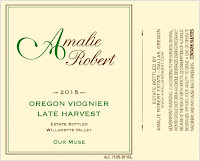
Eventually the aroma, flavor and texture did come around and it was as beautiful a juice as we had ever seen, but at a cost. The Gluc and Fruct were so concentrated that they conquered Saccharomyces cerevisiae. But not until the Ethanol had reached a concentration of 15.6%. That is the outer limit for Saccharomyces cerevisiae and it was death by Ethanol poisoning. They went off to meet cousin Como T. Ose.
But the wine was something very special. All of the Viognier goodness you could handle. It was 5 by 5! Aromas, flavors, and textures permeated the frontal lobe, not to mention a few compromised sensory membranes along the way. And yes, Fruct was there to experience it all. It was a marvelous wine darling, just marvelous.
And that is a teachable moment. Do not let your neighborhood get out of control, especially those Pinots. Gluc and Fruct are necessary, but there is such a thing as too much of a good thing.
Maturation and the path to bottling or, in the brave new world we find ourselves in, getting canned. The final step of winemaking is packaging the said wine for distribution and sale. And this is where the vegan lifestyle meets the winemaking world head-on.
The vegan wine conundrum is really hard to conceptualize. Wine berries being naturally fermented with the yeast they rode in on, into an alcoholic beverage seems to be as vegan as you can get. How did wine come to be so controversial in the vegan home world?
At a wine dinner recently, Ernie was confronted with this question: “I bought a box of Chardonnay the other day, and it said, “May contain fish parts. What the Hell is that all about?” This question, while not specifically vegan, brings the issue front and center.
First of all, if we want to drink wine or any other fermented beverage, like beer, or enjoy certain fermented foods such as soy sauce or kimchi, we have to accept yeast as vegan. Until Star Trek becomes real and we have Synthehol, we need yeast to make fermented beverages. And typically, the yeast among us are quite happy, if not pre-programmed to perform this service for mankind.
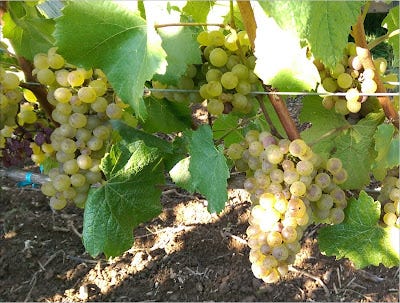
We consider grapes to be vegan. If you walk through any of our neighborhoods at harvest time, from Chardonnay to Viognier, and eat wine berries, they are as vegan as the day is long. If you put a few pounds of wine berries in a bucket and they begin to ferment with wild yeast that are already on the grape skins, then that has to be vegan as well. The resulting wine that is produced? Gotta be considered vegan, and a natural wine as well.
The additives (fining agents) are the issue – egg whites, fish bladders, ox blood, horse hooves etc. Sometimes, these fining agents are added to improve the sensory experience of the wine, be it aroma, flavor or texture. And that process of adding fining agents is as old as wine itself.
Fining agents are mostly old world remedies that resolved issues from old world methods and techniques. As the human population has gained greater knowledge, we have in many cases moved from old word techniques and associated remedies to new world processes that require less intervention. The relatively recent discontinuation of leaches in the medical field is a case in point.
Wine is a luxury good and should offer a pleasurable experience. An adult recreational beverage to be enjoyed with a meal and friends, or with a trusted companion by the fire as the case may be. In the case of Champagne, when you are in love, or equally so, when you are not.
But for goodness sake, let’s leave the chemistry experiment to the energy drinks business, or the upcoming cannabis industry, or some other product where we expect manipulation.
But there is one old world fining agent we use that has stood the test of time and that is Bentonite clay. Bentonite is a (common) clay used for clarification and it is vegan. We use Bentonite to clarify our white and roséwines, so they are considered vegan. Our reds fall clear in barrel and we add no fining agents whatsoever, so they are also vegan.
So at this point of the program, we have vegan wine to put into a container for distribution and sale. Fortunately, no one uses goat skins anymore - especially fortunate for the goats. Metallic closures such as cans and kegs contain no animal residue, so they are vegan. Glass, which is melted sand is also vegan, so far so good.
That brings us to the stopper that goes into the bottle. Traditional corks and the new glass stoppers with silicone O rings are vegan. We use natural cork for all of @AmalieRobert wines, so our entire portfolio of wines are vegan. The technical closures are next.

Technical closures are made from all manner of things. One in particular could be of issue with vegan wine and that is a closure made of cork bits and bound with some form of glue. As everyone knows glue can and has been made from several binding agents. One such binder could be honey, or milk based. And then there is our school days friend Elmer’s glue which was made from equestrian components.
While many wines could be considered vegan, the packaging could eliminate the vegan status by using a closure that contains animal parts or residue thereof. @AmalieRobert we use natural cork, for all of our wines and that is always a safe choice. Good to go!
So as you read this, admiring your natural @AmalieRobert (vegan) cork wine stopper, you can rest assured that in vintage 2019 Gluc and Fruct have left the building. Malic has been smitten and is becoming Lactic. The neighborhoods are all getting pruned back, in order to deliver a spectacular bounty for vintage 2020. In case you missed the first go around, enjoy the “Roaring 20’s”.
Kindest Regards,
Dena & Ernie
Free (vegan) natural cork in every (melted sand) glass bottle.



